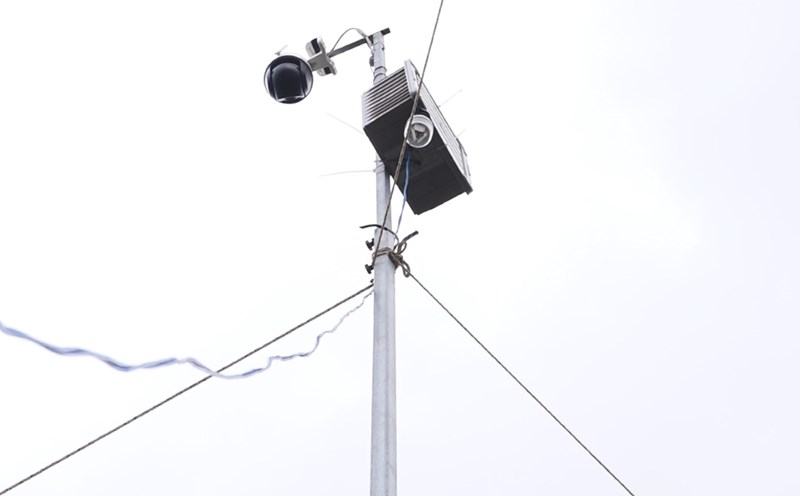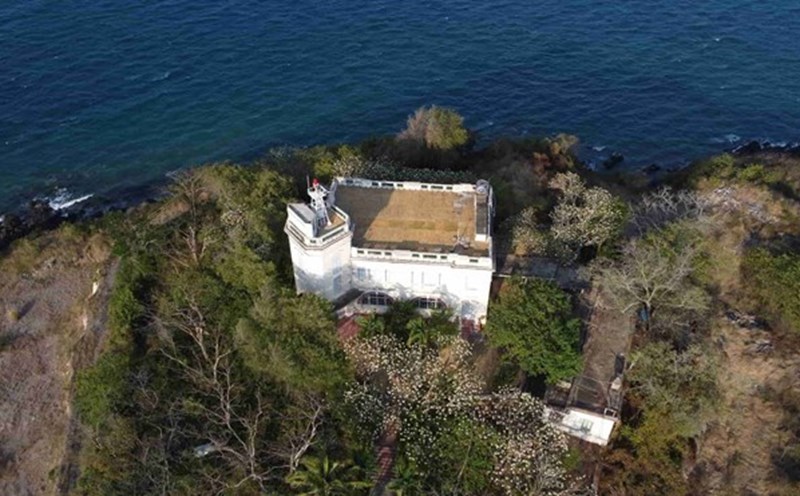Son La currently has over 300 hectares of red-fleshed dragon fruit, concentrated in Mai Son, Binh Thuan, Ta Hoc, Chieng Mung, Thuan Chau, Sop Cop, Yen Chau communes and Chieng An ward.
Of which, the production area according to VietGAP standards and organic products reached more than 240 hectares. In 2025, the province's output will reach about 5,000 tons of fruit.
These days, dragon fruit growers are busy harvesting. In Ta Hoc commune, Mr. Nguyen Thanh Liem's family is harvesting the fourth crop. On an area of 2 hectares planted organically, he plans to harvest about 15 tons of fruit this season.
"Since the beginning of the crop, prices have been stable. Thanks to fertilizer treatment with organic fertilizer and biological products, the dragon fruit is beautiful, sweet and appreciated by the market" - Mr. Liem shared.
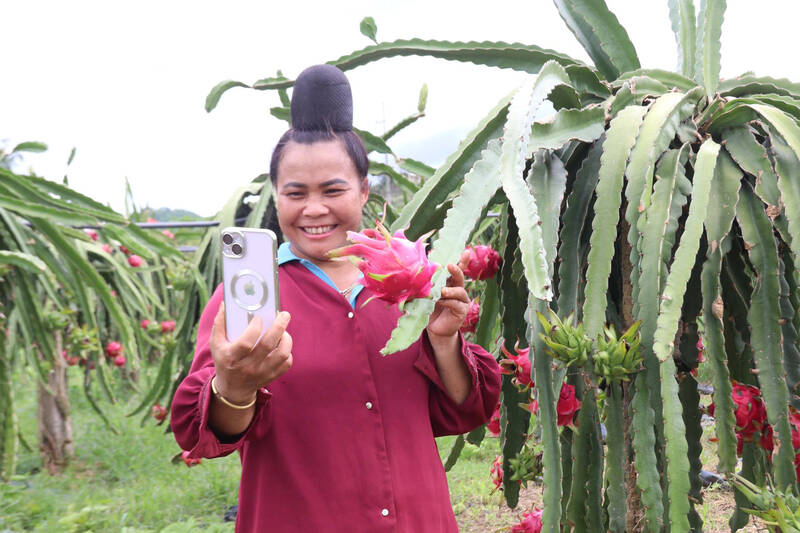
In Chieng Coi commune, this year's harvest starts from the end of June, favorable weather helps dragon fruit bloom and bear many fruits, high fruit yield, beautiful models. On the red trees, traders bustle into the garden to buy at an average price of 14,000 - 20,000 VND/kg.
The family of Ms. Bui Thi Hoa in Cao Son village (Chieng Mung commune) is harvesting red-fleshed dragon fruit. Her garden has more than 5,000 dragon fruit trees, invested in a small drop-off irrigation system, covered with anti-herb tarpaulin, cared for by organic techniques to increase productivity.
"This year, traders ordered early, so we can rest assured to take care of them. This year the fruit is beautiful, the price is stable, the output is good, so people are very excited" - Ms. Hoa said.
In Sop Cop commune, red-fleshed dragon fruit, although newly planted in a trial, has brought clear economic efficiency.
Mr. Tong Van Thien (Ban village, Sop Cop commune) said that at first, he only grew a few dozen dragon fruit trees in the fields ineffectively, now he is developing the garden, harvesting more than 4 tons of fruit/year.
"I learned techniques from other regions and know how to prune branches and fertilize properly. Dragon fruit trees are not difficult to care for, have few pests and diseases, and produce many generations of fruit per year, so they are very effective" - Mr. Thien shared.
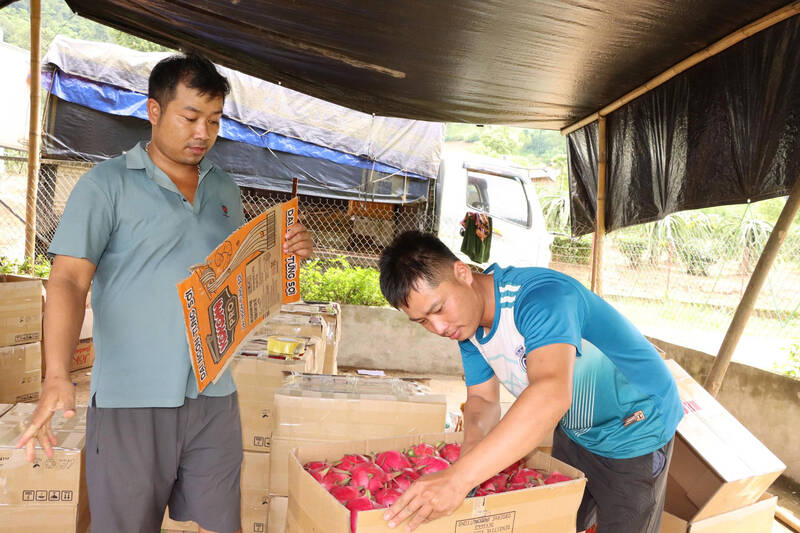
Ms. Hoang Thi Thuan (Huoi Khang village, Sop Cop commune) is also one of the households that earn high profits from dragon fruit. In 2024, from 1 hectare of red-fleshed dragon fruit garden, she earned more than 200 million VND. According to her, thanks to choosing the right variety, applying VietGAP and cultivating in an organic direction, her family's products are always trusted by customers.
At Ngoc Hoang Agricultural Service Cooperative, Ta Hoc commune, Mr. Nguyen Quang Vinh - Director of the cooperative - said that the unit is cooperating with nearly 200 households growing red-fleshed dragon fruit, of which 70 hectares meet export standards.
"Since the beginning of the crop, we have exported more than 150 tons of dragon fruit to foreign markets. The entire 70ha of dragon fruit is grown according to VietGAP standards, granted a growing area code, making it convenient to trace the origin and increase product value" - Mr. Vinh shared.
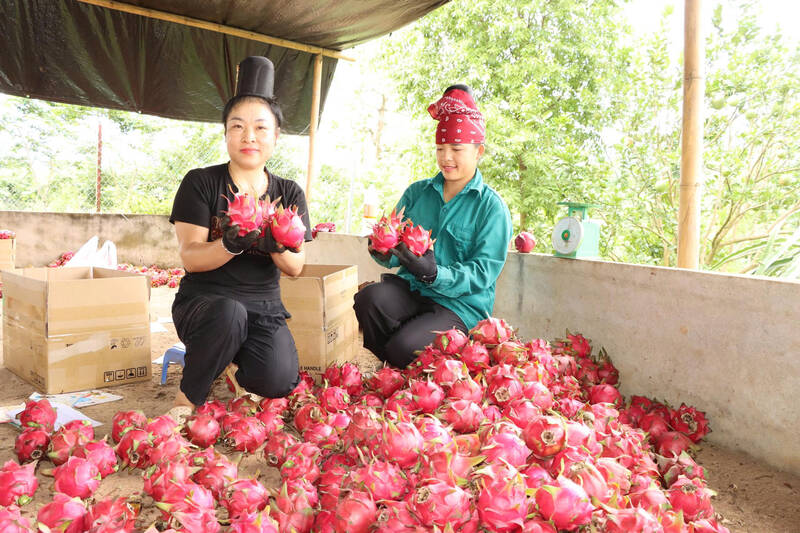
According to Mr. Vu Duc Thuan - Chairman of the Farmers' Association of Son La province, Son La dragon fruit has now affirmed its reputation and quality, exported to many markets such as China, Japan, Korea, Russia... with the requirement of strict control over growing areas and farming processes.
In addition to technical factors, building a brand for Son La dragon fruit has also achieved many positive results. In August 2024, the certification brand "Thanh dragon Son La" was officially licensed by the Department of Intellectual Property. Up to now, there have been years when the cooperative is allowed to use the brand on product packaging.
The certified brand not only helps affirm product quality but also creates competitive advantages, expanding consumption and export markets - Mr. Thuan said.
Red-fleshed dragon fruit from experimental crops has become a key crop that brings sustainable livelihoods to hundreds of households in the mountainous areas of Son La.



